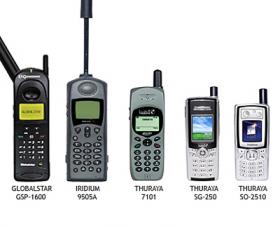DiRECWAY - HughesNet - Starband - iDirect - Linkstar

Satellite Internet with an edge for small office/home office.
DiRECWAY Internet via satellite Home Edition provides premium performance at a value price. This satellite Internet service is versatile enough to be used in your store, small office, or home office and ideal for families and teleworkers.
With Satellite Internet service no need to keep your phone busy
With a DiRECWAY 2-Way satellite connection, you won't tie up your primary phone line or need to install an expensive second line for your Internet connection. Stay connected as long as you like without worrying about missing important phone calls. No more waiting for an old-fashioned Internet dial-up connection. Keep calling!
Satellite Internet Connection Product Features
To get connected all you need is a DiRECWAY satellite dish (typically a 0.74m dish) installed at your home or office so it faces the southern sky. Coaxial lines connect your dish to a "satellite modem". This modem is directly connected to your PC. No phone lines are needed after initial set-up. The satellite Internet system is installed and activated by expert installers. Unlike one-way Internet via satellite, 2-Way DiRECWAY satellite Internet offers download and upload capabilities straight from the dish. This means that no phone lines are required to surf the net, or to send important files and emails to friends, customers and suppliers.
Broadband Satellite Internet Speed
Isn't it time to let go of that slow phone modem? DiRECWAY satellite Internet service gives you a broadband connection, so you can get more excitement out of the Internet than you ever thought possible - without the wait or hassle.
2-Way DiRECWAY service allows users to download Internet content at speeds of up to 400++ kbps. That's 8 times faster than the average modem. The DiRECWAY broadband satellite system provides a satellite return channel with upload speeds rated at up to 128 kbps (50-70Kbps typical). This is still considerably faster than most modems. You can now download a 2MB file in just 30 to 40 seconds.
Broadband Satellite Internet Speed
The satellite communications industry is a mature and stable one. For decades, satellites have been used to transport analog voice and video signals around the globe, providing excellent quality and reliability. Reliability of the actual satellites once placed in operation approaches 100%. Failures have almost always occurred during launch or prior to deployment of services. In addition to voice and video signals, satellites have been successfully used to transport data for many years. Everyone has seen the dishes on top of gas stations and convenience stores that are used for low-speed transactions such as credit card approvals. With the advent of the Internet, satellite technology companies have added broadband IP support making it possible for even the most remote locations to participate in the World Wide Web.
Most legacy broadband satellite solutions have been built by piggybacking IP on top of DVB satellite technology, which was designed for television video. These solutions are inefficient and sluggish, and generally provide poor uplink performance and lack support for applications such as VoIP. New technology from iDirect, developed from the ground up to support IP over satellite, has had the effect of upgrading performance in a manner that is similar to the upgrade from a shared Ethernet hub to a switch. The resulting solution provides enterprise class quality and reliability.
Since the satellite Internet era began, we have offered a complete line of broadband satellite Internet equipment and service levels.
We are a full-service broadband satellite Internet access provider, with satellite Internet service deployed to thousands residential users.
We offer satellite Internet services powered by the award-winning DiRECWAY platform from Hughes Network Systems. Satellites include the Eutelsat W1, Galaxy 11, Galaxy 4R, and Horizons 1 operated by PanAmSat, as well as the SATMEX5 satellite.
source http://www.highspeedsat.com/satellite-internet.htm
 This is the first of Inmarsat's 4th generation satellite fleet, was launched in March 2005 and subsequently went into service over the Indian Ocean. This fleet includes two latest generation satellites, the Inmarsat-4s (I-4s), which were launched in 2005. Together, they provide coverage to around 85 per cent of the world's landmass and 98 per cent of the world's population. That dish antenna is 9 meters across, the array of solar panels extend 45 meters. The flap at far left is a "sail", able to "harness pressure exerted by particles from the Sun - the solar wind - to steer the I-4 and fine-tune its orbital position". This bird is already improving existing Inmarsat service in its planet print, and shows its stuff in terms of high speed data.
This is the first of Inmarsat's 4th generation satellite fleet, was launched in March 2005 and subsequently went into service over the Indian Ocean. This fleet includes two latest generation satellites, the Inmarsat-4s (I-4s), which were launched in 2005. Together, they provide coverage to around 85 per cent of the world's landmass and 98 per cent of the world's population. That dish antenna is 9 meters across, the array of solar panels extend 45 meters. The flap at far left is a "sail", able to "harness pressure exerted by particles from the Sun - the solar wind - to steer the I-4 and fine-tune its orbital position". This bird is already improving existing Inmarsat service in its planet print, and shows its stuff in terms of high speed data.












